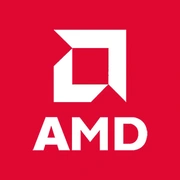AMD Radeon 880M

The AMD Radeon 880M GPU is a powerful integrated graphics solution that offers impressive performance for a variety of tasks. With a base clock speed of 400 MHz and a boost clock speed of 2900 MHz, this GPU is capable of handling demanding applications and games with ease. Its 768 shading units and 2MB of L2 cache ensure smooth and responsive graphics rendering, while the low 15W TDP makes it an efficient choice for laptops and other mobile devices.
One of the standout features of the Radeon 880M is its theoretical performance of 9.087 TFLOPS, which means it can deliver excellent frame rates and visual quality in modern games and multimedia experiences. The system shared memory type and memory clock ensure that the GPU can access the necessary resources quickly and efficiently, resulting in a smooth and immersive user experience.
Overall, the AMD Radeon 880M is a solid choice for anyone in need of a high-performance integrated graphics solution. Its impressive clock speeds, shading units, and theoretical performance make it well-suited for gaming, multimedia editing, and other graphics-intensive tasks. Additionally, its low TDP ensures that it can deliver such performance without consuming excessive power or generating excessive heat. Whether you're a gamer, content creator, or simply in need of a reliable GPU for everyday use, the Radeon 880M is definitely worth considering.
Basic
Label Name
AMD
Platform
Integrated
Launch Date
July 2024
Model Name
Radeon 880M
Generation
Navi III IGP
Base Clock
400 MHz
Boost Clock
2900 MHz
Bus Interface
PCIe 4.0 x8
Transistors
25.39 billion
RT Cores
16
Compute Units
16
TMUs
?
Texture Mapping Units (TMUs) serve as components of the GPU, which are capable of rotating, scaling, and distorting binary images, and then placing them as textures onto any plane of a given 3D model. This process is called texture mapping.
48
Foundry
TSMC
Process Size
4 nm
Architecture
RDNA 3.0
Memory Specifications
Memory Size
System Shared
Memory Type
System Shared
Memory Bus
?
The memory bus width refers to the number of bits of data that the video memory can transfer within a single clock cycle. The larger the bus width, the greater the amount of data that can be transmitted instantaneously, making it one of the crucial parameters of video memory. The memory bandwidth is calculated as: Memory Bandwidth = Memory Frequency x Memory Bus Width / 8. Therefore, when the memory frequencies are similar, the memory bus width will determine the size of the memory bandwidth.
System Shared
Memory Clock
System Shared
Bandwidth
?
Memory bandwidth refers to the data transfer rate between the graphics chip and the video memory. It is measured in bytes per second, and the formula to calculate it is: memory bandwidth = working frequency × memory bus width / 8 bits.
System Dependent
Theoretical Performance
Pixel Rate
?
Pixel fill rate refers to the number of pixels a graphics processing unit (GPU) can render per second, measured in MPixels/s (million pixels per second) or GPixels/s (billion pixels per second). It is the most commonly used metric to evaluate the pixel processing performance of a graphics card.
92.80 GPixel/s
Texture Rate
?
Texture fill rate refers to the number of texture map elements (texels) that a GPU can map to pixels in a single second.
139.2 GTexel/s
FP16 (half)
?
An important metric for measuring GPU performance is floating-point computing capability. Half-precision floating-point numbers (16-bit) are used for applications like machine learning, where lower precision is acceptable. Single-precision floating-point numbers (32-bit) are used for common multimedia and graphics processing tasks, while double-precision floating-point numbers (64-bit) are required for scientific computing that demands a wide numeric range and high accuracy.
17.82 TFLOPS
FP64 (double)
?
An important metric for measuring GPU performance is floating-point computing capability. Double-precision floating-point numbers (64-bit) are required for scientific computing that demands a wide numeric range and high accuracy, while single-precision floating-point numbers (32-bit) are used for common multimedia and graphics processing tasks. Half-precision floating-point numbers (16-bit) are used for applications like machine learning, where lower precision is acceptable.
556.8 GFLOPS
FP32 (float)
?
An important metric for measuring GPU performance is floating-point computing capability. Single-precision floating-point numbers (32-bit) are used for common multimedia and graphics processing tasks, while double-precision floating-point numbers (64-bit) are required for scientific computing that demands a wide numeric range and high accuracy. Half-precision floating-point numbers (16-bit) are used for applications like machine learning, where lower precision is acceptable.
9.087
TFLOPS
Miscellaneous
Shading Units
?
The most fundamental processing unit is the Streaming Processor (SP), where specific instructions and tasks are executed. GPUs perform parallel computing, which means multiple SPs work simultaneously to process tasks.
768
L1 Cache
128 KB per Array
L2 Cache
2 MB
TDP
15W
Vulkan Version
?
Vulkan is a cross-platform graphics and compute API by Khronos Group, offering high performance and low CPU overhead. It lets developers control the GPU directly, reduces rendering overhead, and supports multi-threading and multi-core processors.
1.3
OpenCL Version
2.1
OpenGL
4.6
DirectX
12 Ultimate (12_2)
Power Connectors
None
Shader Model
6.7
ROPs
?
The Raster Operations Pipeline (ROPs) is primarily responsible for handling lighting and reflection calculations in games, as well as managing effects like anti-aliasing (AA), high resolution, smoke, and fire. The more demanding the anti-aliasing and lighting effects in a game, the higher the performance requirements for the ROPs; otherwise, it may result in a sharp drop in frame rate.
32
Benchmarks
FP32 (float)
Score
9.087
TFLOPS
Blender
Score
292.75
Compared to Other GPU
FP32 (float)
/ TFLOPS
Blender
Share in social media
Or Link To Us
<a href="https://cputronic.com/en/gpu/amd-radeon-880m" target="_blank">AMD Radeon 880M</a>